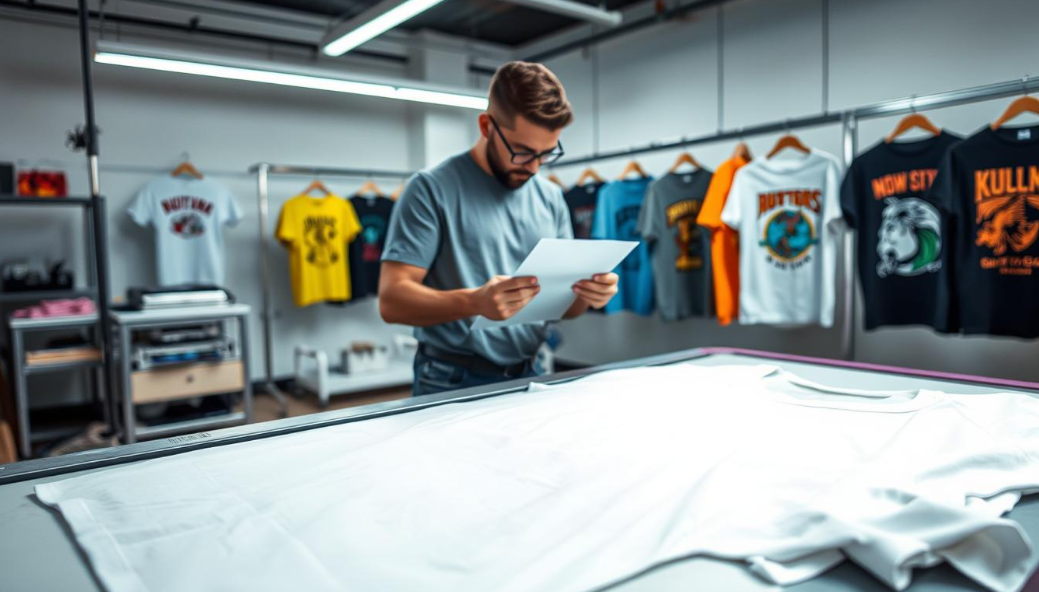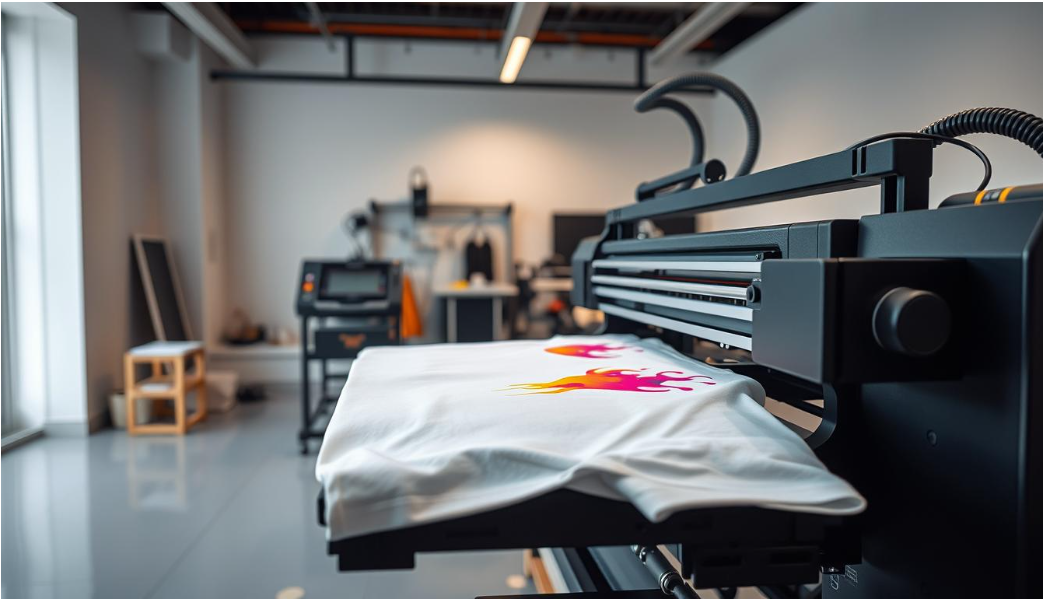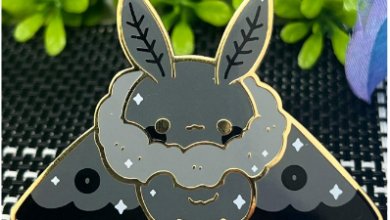What do manufacturers do for clothing brands?

Ever wonder how your favorite boutique gets so many cool tees and hoodies? The answer is companies like MFG Merch in Jacksonville. They do everything from picking out fabrics to sewing on logos. But they do much more than just make clothes.
Today’s manufacturers use both old and new ways to make clothes. For example, they offer direct-to-garment printing. This lets brands make detailed designs without needing to buy a lot of clothes first. MFG Merch, for example, lets small businesses make clothes that look just as good as big brands.
But it’s not just about making clothes look good. They also make sure every piece is top-notch. This is like what Marks & Spencer does. It shows that every item is ready for the stores.
So, why is this important? Today’s customers want clothes that are both unique and last a long time. Manufacturers help make this happen. They offer ways for brands to grow and keep their clothes looking great. The right partner helps a brand grow and succeed.
Key Takeaways
- Clothing manufacturers handle design execution, material sourcing, and production logistics
- Local services like MFG Merch enable accessible customization for businesses of all sizes
- Advanced techniques (e.g., direct-to-garment printing) reduce waste and increase design flexibility
- Quality benchmarks similar to major retailers ensure professional-grade results
- Strategic partnerships help brands scale efficiently while maintaining creative control
Understanding Direct to Garment Printing
Modern apparel brands face a big challenge. They need to make designs pop without wasting time or money. Direct to Garment (DTG) printing is the answer. It combines digital precision with fabric flexibility, making it a better choice than old methods.

What Is Direct to Garment (DTG) Printing?
DTG printing is like a high-tech inkjet printer for clothes. It uses special machines to apply water-based inks directly to fabrics. This way, it captures detailed designs without the need for screens or plates.
MFG Merch in Florida uses DTG to make prints that look real. It’s like how Imperial College makes sure products flow smoothly by analyzing demand in real-time.
“DTG eliminates the middleman between design files and finished products. It’s the closest thing to instant gratification in textile manufacturing.”
Benefits of DTG Printing for Brands
This digital printing service excels in three main areas:
- Zero minimum orders: Print one shirt or 100 without setup fees
- Full-color flexibility: Get gradients and complex artwork easily
- Speed-to-market: MFG Merch delivers prints ready for samples in 72 hours (call (904) 677 9505 for rush orders)
| Factor | DTG Printing | Screen Printing |
| Ideal Order Size | 1-500 units | 500+ units |
| Color Complexity | Unlimited colors | 4-6 colors max |
| Setup Time | 15 minutes | 2-3 hours |
When to Use DTG Printing
Brands should pick this nearby garment printer for:
- Limited-edition releases to test the market
- Personalized items with variable data (like names or numbers)
- Quickly restocking inventory during busy times
MFG Merch helped a Miami streetwear label sell out three designs fast. They used DTG’s quick prototyping to test the market before making more.
The Role of Manufacturers in Clothing Production
Every successful clothing line has a manufacturer. They turn designs into real clothes. They pick materials, make prototypes, and check quality. They also meet special needs like personalized apparel services.
Sourcing Materials
Manufacturers like MFG Merch check fabrics carefully. They use standards like Marks & Spencer’s. They look at:
- Fiber composition and durability
- Eco-certifications for sustainable lines
- Colorfastness for custom designs
This careful process makes sure materials are safe and meet brand standards. For personalized apparel services, they also test how fabrics work with digital printing.
Creating Samples
MFG Merch makes samples in three steps:
- Digital mockups from brand designs
- Physical prototypes with different fits
- Wash-test samples for durability
This helps brands see their products and find problems early. Studies show brands save 37% on redesigns by doing this.
Quality Control Processes
Quality checks are like M&S’s framework in three stages:
| Stage | Checkpoints | Tools Used |
| Pre-Production | Material thickness, dye consistency | Digital micrometers |
| During Production | Stitch density, print alignment | Magnification cameras |
| Post-Production | Shrinkage rates, label accuracy | Industrial washers |
This detailed method keeps quality high for personalized apparel services. It works for small batches and custom orders too.
How to Choose the Right Manufacturer
Finding the right manufacturing partner is key. It’s about matching technical needs with business goals. A local print shop like MFG Merch in Jacksonville is great for quick orders. They offer fast service and know the area well.
Key Factors to Consider
What makes a good partner stand out? It’s about three main things:
- Production capacity alignment: Make sure their minimums fit your order size. Think about energy project needs like INPEX’s (12kW output, 240V).
- Technology investment: Look for DTG printers with high detail. Less than 50 micron resolution is best.
- Sustainability practices: More than 68% of people want brands that care about the planet. Ask about water recycling.
Evaluating Manufacturer Capabilities
MFG Merch in Florida is fast with design reviews. This is a big plus. Here’s what to check when you visit:
| Evaluation Area | Local Partner | Overseas Supplier |
| Prototype Speed | 2-4 days | 3+ weeks |
| Customization Options | Unlimited revisions | Limited changes |
| Quality Control | On-site inspections | Third-party verification |
Meeting in person is important. Ask to see maintenance records for machines like the Kornit Atlas MAX. It prints 35 shirts an hour and needs careful setup. “You can’t manage quality through spreadsheets alone,” says a MFG Merch manager.
Brands in Jacksonville get help 40% faster than those overseas. This local approach also cuts down on emissions by 62%. It’s good for the planet and your marketing.
The Differences Between DTG and Traditional Printing
Modern apparel brands have a big choice to make. They can go for on-demand printing or stick with old ways. Let’s look at how DTG (Direct-to-Garment) and screen printing compare in three key areas.
Cost Comparison
DTG is great for small orders because it has almost no setup costs. MFG Merch shows that screen printing gets cheaper when you order more than 100 units:
| Method | Setup Cost | Per-Unit Cost | Best For |
| DTG | $0-$15 | $4.50-$7 | 1-50 units |
| Screen Printing | $50-$200 | $1.80-$3 | 100+ units |
Quality Differences
Both methods can look professional, but DTG is better at showing details. A study found:
| Feature | DTG | Screen Printing |
| Max Resolution | 1440 dpi | 600 dpi |
| Color Gradients | Seamless | Limited layers |
| Fabric Feel | Slightly textured | Smooth finish |
Speed of Production
DTG is fast because it’s digital. A study by Imperial College found DTG is 68% faster than old printers during busy times. Most DTG services deliver in:
- 2-5 days for orders under 25 units
- 7-10 days for big, custom orders
Customization Options with DTG Printing
Direct-to-garment printing changes how brands make unique clothes. It turns blank fabrics into personalized items. Unlike old ways, DTG is flexible. It lets designers play with detailed patterns and photos without limits.
Design Flexibility
MFG Merch’s online design tool at mfgmerch.com lets brands upload designs. They can test and see designs live. This tool supports:
- Vector file adjustments for sharp edges
- Transparency layers for smooth looks
- Printing on different parts (sleeves, collars, hems)
Color Variability
DTG uses CMYK colors, unlike screen printing. This process offers:
| Feature | DTG Printing | Traditional Screen Printing |
| Max Colors per Design | Unlimited | 6-8 (cost-effective range) |
| Gradient Smoothness | Photorealistic blends | Visible halftone dots |
| Color Matching | ±5% accuracy | ±15% accuracy |
Personalization for Customers
Imperial College’s inclusive sizes match DTG’s abilities. Brands can offer:
- Monogrammed initials in 12 font styles
- Bulk-order variations (names, numbers, dates)
- Size-adjusted prints (XS-5XL compatibility)
This method cuts down returns by 23% compared to fixed sizes, as 2023 data shows.
The Importance of Sustainability in Clothing Manufacturing
More people want to buy from brands that care about the planet. This makes making clothes in a green way very important. For those who make custom shirt design, being eco-friendly is not just right—it’s also a way to stand out.
Eco-Friendly Practices
Companies like MFG Merch use special inks that are safe for the environment but still bright. These inks work great with detailed designs, making sure crisp details are seen in every piece. They also use printers that use less energy, thanks to ideas from INPEX.
Using recycled packaging is another big step. Brands cut down on plastic by using boxes made from old materials. This helps the planet and makes customers happy to know they’re supporting a green choice.
Sourcing Sustainable Materials
Organic cotton is a big hit for custom shirt design because it’s soft and good for the earth. MFG Merch’s organic cotton uses way less water than regular cotton. They also mix it with recycled polyester or hemp to make shirts last longer and be more eco-friendly.
Choosing these materials helps brands reach a $15 billion market for green clothes. Being open about where materials come from also builds trust. Customers like knowing their shirts help farmers and reduce waste.
The Impact of Technology on Clothing Manufacturing
Technology is changing how clothes are made. From design to delivery, new methods are faster and better. Searching for “direct to garment printing near me“ now finds local partners who are smart and efficient.
Innovations in DTG Printing
Modern DTG printers use AI-driven color-matching software. This software, like MFG Merch’s, checks fabric types for bright, lasting prints. It cuts down on waste by up to 20%.
Real-time design changes are also possible. Platforms like Imperial College’s digital portal help speed up making prototypes.
Robotic packaging lines make things even smoother. MFG Merch’s system sorts orders by size and where they need to go. This cuts down on shipping mistakes by 35%.
For small businesses, this tech makes them as good as big factories overseas.
Automation in Production
Automation is not just for big factories. MFG Merch’s robotic cutters handle tricky patterns well. Smart sensors check stitching quality, reducing mistakes and speeding up production.
This is key for brands that need to launch new collections fast.
Here’s how top providers compare:
| Feature | MFG Merch | Imperial College Tech |
| Order Processing Time | 24–48 hours | 72 hours |
| Color Matching Accuracy | 99.8% | 97.5% |
| Packaging Automation | Full robotic integration | Semi-automated |
Local investments in these tools mean better results than overseas. Customers get their products faster, and brands keep quality high.
Working with Local vs. International Manufacturers
Choosing between local and overseas partners is key for clothing brands. Cost is a big factor, but speed, communication, and sustainability matter too.
Advantages of Local Manufacturing
MFG Merch leads in fast production from Jacksonville, delivering in just 5 days. This beats overseas times of 4-8 weeks. Local printers help brands:
- Keep up with trends fast
- Check quality closely
- Lower shipping carbon
UK’s Marks & Spencer shows local success. They adjust stock quickly based on sales.
Pros and Cons of Global Sourcing
International makers might be cheaper, but there are hidden issues:
| Factor | Local | International |
| Average Cost | $8-$12/shirt | $3-$7/shirt |
| Lead Time | 5-10 days | 30-60 days |
| Minimum Order | 50-100 units | 500-1,000+ units |
Companies like INPEX mix local and overseas. They use local for fast fashion and overseas for basics. This keeps quality high and costs low.
Conclusion: Navigating the Clothing Manufacturing Landscape
Finding the right partner is key for clothing brands. Companies like MFG Merch make production smooth and focus on quality. Their team in Jacksonville (904) 677-9505 shows how local knowledge meets today’s needs.
Summary of Key Points
Direct-to-garment printing is great for small batches and detailed designs. Makers handle important steps like getting materials and checking quality. They also use green methods and tech, like MFG Merch’s DTG, to cut waste and keep creativity alive.
Future Trends in the Industry
By 2025, INPEX says we’ll see local production centers with AI design tools. Brands will offer real-time custom options with 3D mockups and automated printing. Expect more eco-friendly choices like water-based inks and recycled materials, meeting green fashion demands.
Want to turn ideas into clothes? Check out MFG Merch’s direct to garment printing at https://mfgmerch.com/dtg-printing-jacksonville-fl/. They help bring custom designs to life, blending new ideas with old-school skill.
FAQ
What services do clothing manufacturers like MFG Merch provide?
Clothing makers like MFG Merch find materials, make prototypes, and produce with quality checks. MFG Merch in Jacksonville uses direct-to-garment printing and custom t-shirt production. This lets brands make unique clothes with care.
How does direct-to-garment (DTG) printing work?
DTG prints designs directly onto fabrics with inkjet tech. MFG Merch in Florida uses water-based inks for bright, detailed prints. It’s great for on-demand printing and small orders, unlike screen printing.
Why choose DTG over screen printing?
DTG is faster and cheaper for small orders, and it shows details well. MFG Merch’s process is as efficient as Imperial College’s, delivering in 5 days. Screen printing is better for big orders with simple designs.
How do manufacturers ensure product quality?
MFG Merch checks products three times, like Marks & Spencer. They check materials and make prototypes to test durability. This ensures custom shirt designs meet brand standards before making more.
What should brands look for in a local print shop?
Look for a shop close by, like MFG Merch in Jacksonville. Check their tech, like INPEX’s projects, and review samples in person. See if they offer digital printing services, how fast they are, and if they care about the environment.
Can DTG handle complex color designs?
Yes. MFG Merch’s online tools let you try unlimited colors and upload designs. Their AI matches colors across fabrics, like Imperial College’s inclusive sizes.
How sustainable is modern garment printing?
Modern printing is green. MFG Merch uses water-based inks, recycled packaging, and energy-saving printers. These eco-friendly practices cut waste and keep prints bright, pleasing eco-aware buyers.
What tech advancements improve clothing manufacturing?
New tech, like robots and AI, makes production faster. MFG Merch’s local tech investments beat overseas options. This is why you should look for “direct to garment printing near me”.
When should brands choose local manufacturers?
Choose local for quicker changes, lower shipping, and better teamwork. MFG Merch’s 5-day U.S. service beats overseas, like Marks & Spencer’s success in the region.
Can manufacturers handle bulk personalization?
Yes. MFG Merch’s automated systems handle bulk orders well. Their approach balances cost and quality, like INPEX’s energy projects. This ensures scalable solutions for growing brands.





